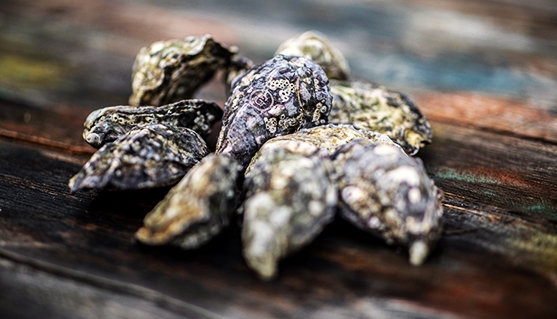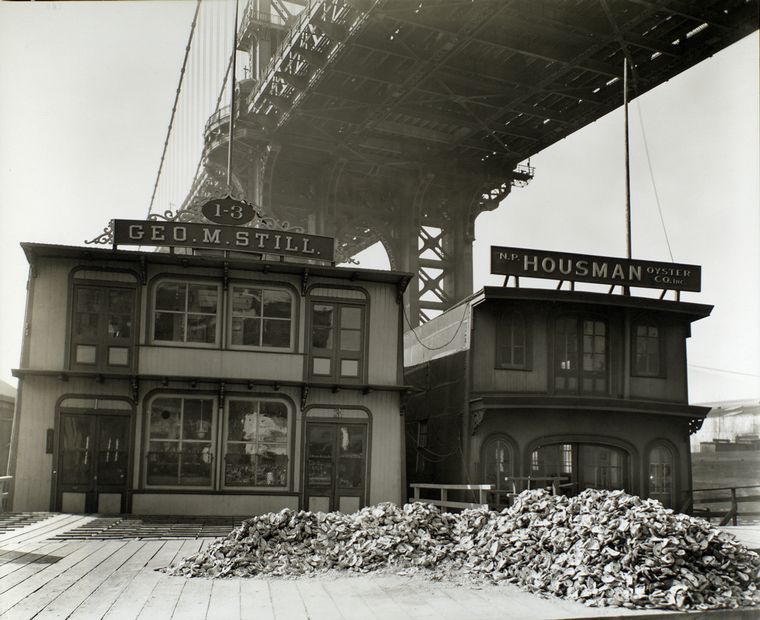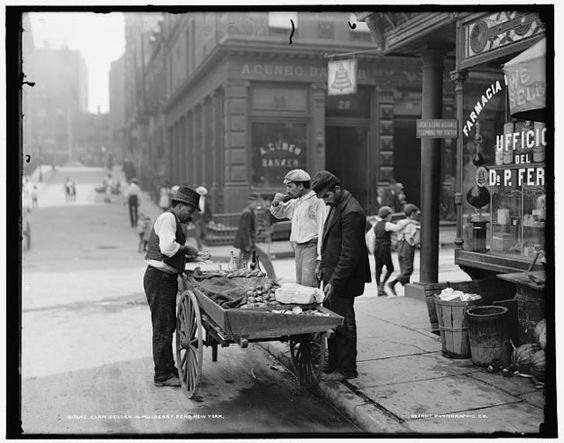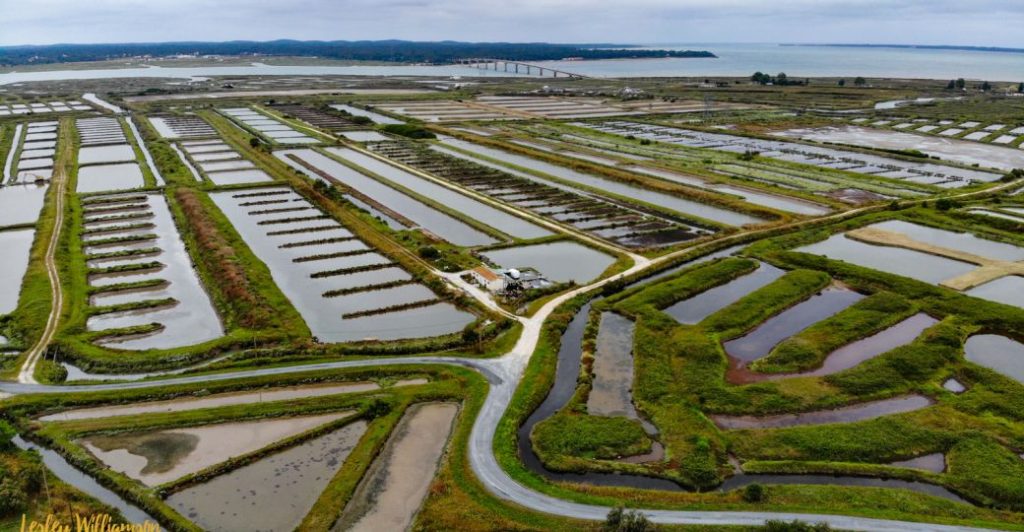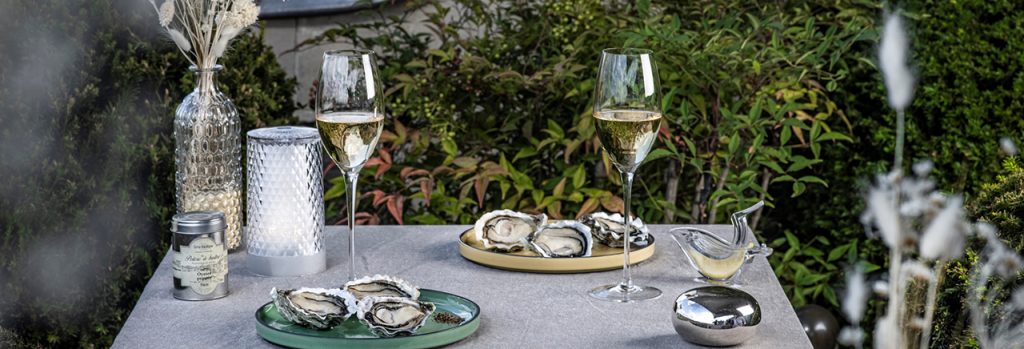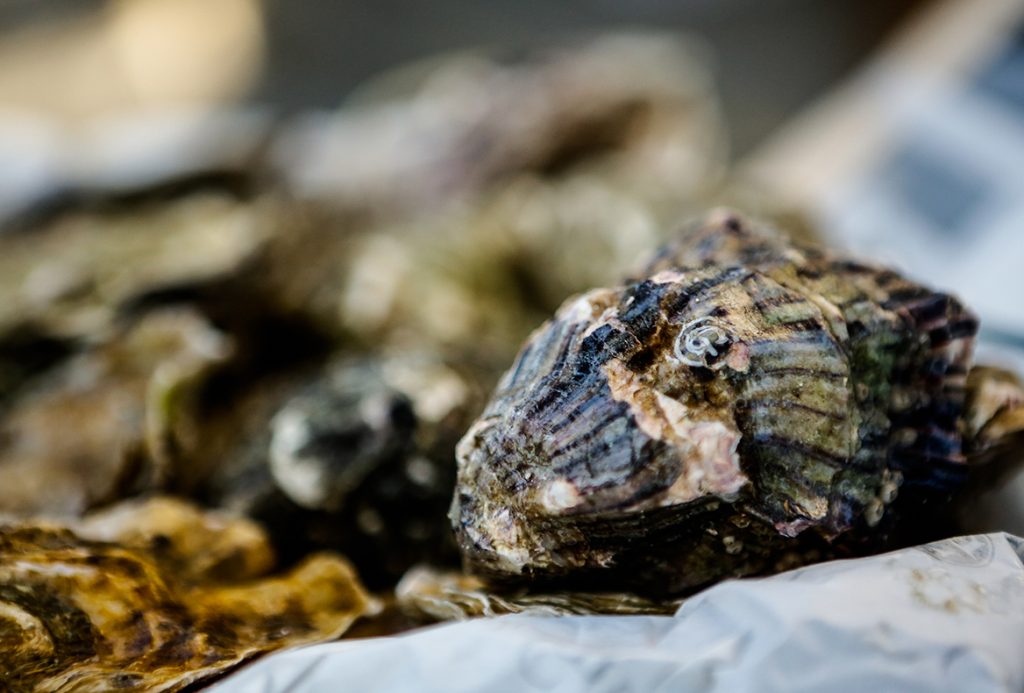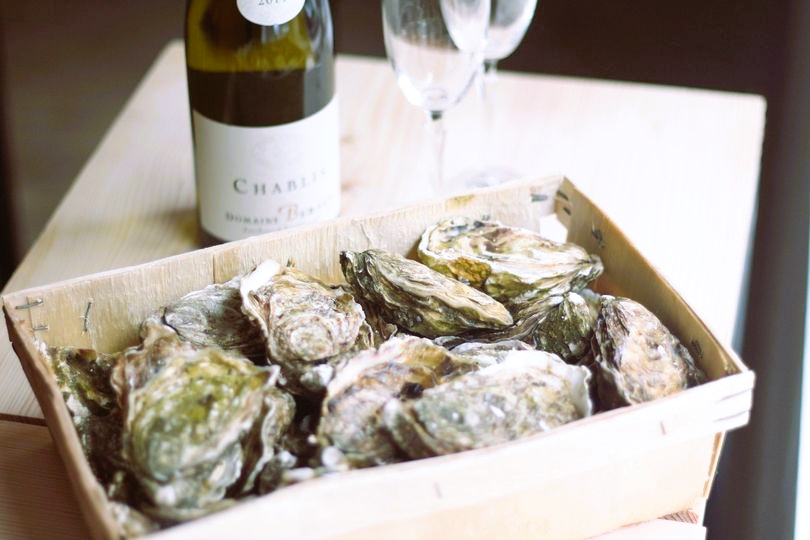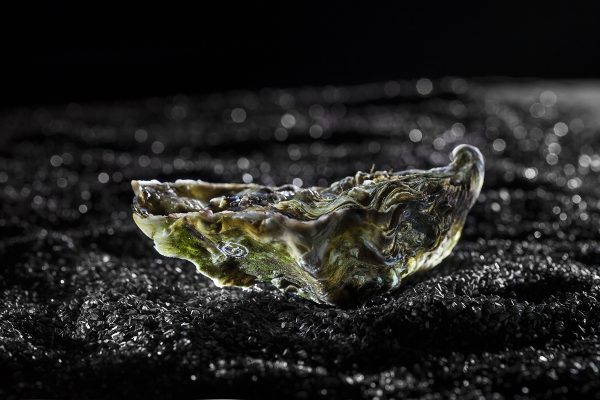“Oysters are the usual opening to a winter breakfast. Indeed, they are almost indispensable.”
Alexandre Balthazar Laurent Grimod de La Reynière, (1758 – 1837)
Terroir
The French term terroir is often used throughout the world of wine to describe elements such as the climate, geology, topography, and management practices of a vineyard and their impact on a wine’s aroma, taste, and overall phenotype. It forms the basis of the French ‘appellation d’origine contrôlée (AOC) system’ and is the model for the geographical regulation of wine grape cultivation and winemaking around the world, in order to preserve integrity and quality of a region, variety, and site.
The foundation premise being, that the habitat wine grapes are grown in imparts specific qualities and characters unique to its exclusive site; others go further, to include the producers themselves so that a combination of farm and family create something truly unique and inimitable in the bottle.
Merroir
Oysters are natural filter feeders; they feed by pumping water through their gills, trapping particles of food, nutrients, suspended sediments, and contaminants. In doing so, oysters help keep the waters around them clean and clear for other aquatic life. But, if you are what you eat then just as the soils and the diet available to grapevines impact on the ultimate, character, quality, and flavour of what the grapes taste like, so too does the maritime environment, diet, and management of an oyster play a very big part in both its physical makeup and its ultimate taste. It should be of little surprise that oysters taste like where they come from and what they eat, this not only gives them observable quality it also gives them truly regional characteristics. In French, the word mer means sea, and so the term merroir has been adopted to describe a sense of maritime terroir for oysters.
“As I ate the oysters with their strong taste of the sea and their faint metallic taste that the cold white wine washed away, leaving only the sea taste and the succulent texture, and as I drank their cold liquid from each shell and washed it down with the crisp taste of the wine, I lost the empty feeling and began to be happy and to make plans.”
Ernest Hemingway, ‘A Moveable Feast’
The Big Oyster
Oysters have been eaten since antiquity, there are oyster middens in Australia dating back 10,000 years BC and there is evidence of oyster cultivation in Japan as far back as 2,000 years BC. During the time of the Ancient Greeks and the Roman Empire, they were being over-harvested and seen as a delicacy, only available to the wealthier, privileged classes.
Commencing at the beginning of the 1800s all that changed, oysters experienced something of a golden age, thriving as a ubiquitous and inexpensive source of protein that would last for well over 100 years.
It has been well documented that for most of the 1800s, New Yorkers consumed the astonishing amount of over one million oysters every single week! Over this period the population of New York City grew from 60,000 in 1800 to 3.8 million people at the turn of the century, to just over 10 million people by 1930.
There is evidence of large-scale oyster consumption in the area dating back to 6950 B.C. and Oysters thrived for thousands of years in the brackish waters around New York Harbor. As filter feeders, they kept the estuary clean and fed the native inhabitants. In the early 1600s, the New York metro area is estimated to have contained nearly half of the world’s entire oyster population.
Immigrants soon turned this resource into a major industry, to such an extent that oyster shells were used in road paving and ground up to be mixed in with construction cement. As well as being available in restaurants and specific ‘oyster cellars’ all over New York City, oysters were being shipped all over the country. New Yorkers ate them anytime and almost anywhere, including from carts out on the street.
They ate Blue Points, Saddle Rocks, Rockaways, Lynnhavens, Cape Cods, Buzzard Bays, Cotuits, Shrewsburys—raw on the half shell. They ate them as fried oysters, oyster pie, oyster patties, oyster box stew, Oysters Pompadour, Oysters Algonquin, oysters a la Netherland, a la Newberg, a la Poulette, oysters roasted on toast, broiled in shell, served with cocktail sauce, stewed in milk or cream, fried with bacon, escalloped, fricasseed, and pickled. At the height of their fame, New York oysters were considered the finest in the world, at a time when New York was the busiest port in the world.
In a comprehensive history of the oyster in New York, ‘The Big Oyster’, author Mark Kurlansky wrote, “the history of the New York oyster is a history of New York itself—its wealth, its strength, its excitement, its greed, its thoughtfulness, its destructiveness, its blindness, and—as any New Yorker will tell you—its filth.” It was pollution and over-harvesting that killed the oyster industry in New York, a surprising feat considering that the lower Hudson estuary once had 350 square miles of oyster beds.”
While visiting New York in the 1790s, the Frenchman Moreau de St. Mery commented, “Americans have a passion for oysters, which they eat at all hours, even in the streets.” Oysters were the regular fare at cheap eateries, and he claimed that the very poorest New Yorkers “had no other subsistence than oysters and bread.” Fortunately, oysters are nutritious—rich in protein, phosphorus, iodine, calcium, iron, and vitamins A, B, and C.”
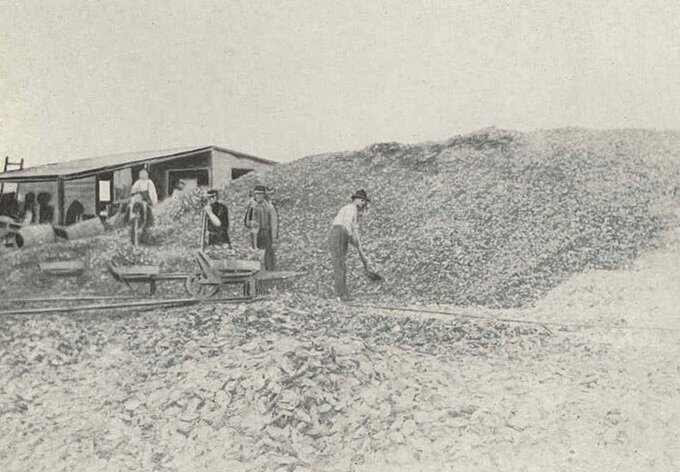 One early problem for the New York oyster industry was the use of child labor, children as young as four years old would work from 3 am to 5 pm shucking oysters, much of this was documented and reported by former schoolteacher Lewis Wickes Hine who gave up the classroom to document the plight of these poor children and he reported it to National Child Labor Committee, of which he had become their chief photographer. His photographs exist as confrontational evidence to this day, and his work changed the laws governing child labor in America forever.
One early problem for the New York oyster industry was the use of child labor, children as young as four years old would work from 3 am to 5 pm shucking oysters, much of this was documented and reported by former schoolteacher Lewis Wickes Hine who gave up the classroom to document the plight of these poor children and he reported it to National Child Labor Committee, of which he had become their chief photographer. His photographs exist as confrontational evidence to this day, and his work changed the laws governing child labor in America forever.
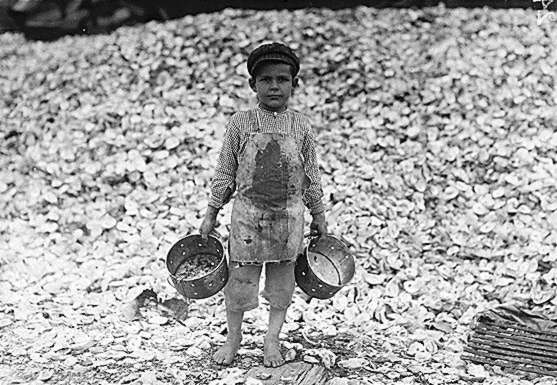 Carmen Nigro, Managing Research Librarian, Milstein Division of U.S. History noted, that burdened by over-harvesting, sewage pollution, and landfill—Manhattan had added over 60 acres to its land area with landfill—the oysters of New York harbor were not sustainable. Until shockingly recently (1972), New York was dumping millions of litres of raw, untreated sewage into the harbor on a daily basis; unsurprisingly the oyster beds did not survive.
Carmen Nigro, Managing Research Librarian, Milstein Division of U.S. History noted, that burdened by over-harvesting, sewage pollution, and landfill—Manhattan had added over 60 acres to its land area with landfill—the oysters of New York harbor were not sustainable. Until shockingly recently (1972), New York was dumping millions of litres of raw, untreated sewage into the harbor on a daily basis; unsurprisingly the oyster beds did not survive.
In 1921, the New York City Health Department closed the Jamaica Bay oyster beds, then responsible for 80 million oysters a year, due to fears of food-borne illness, including typhoid. From there the end came fast, and just six years later in 1927, the last of New York City’s oyster beds were closed in Raritan Bay.
With such a mass depletion of the world’s oyster stocks, it was no longer a cheap and easily accessible product and was once again resigned to the list of luxury items for the wealthy and the elite.
The Fins
France has long held a reputation for producing the finest oysters, the ‘Fine De Claire’ oysters are moved to knee-deep claire (rectangular salt ponds) for a month or more to ‘finish’ and refine prior to harvesting. Here they mature into a fatter, fruitier, and more balanced oyster, characters gained from the local waters and the phytoplankton in the ponds. This technique undoubtedly gives the oysters a superior quality to those left in the open sea.
The Marennes Oléron Basin:
Once a supplier of oysters to the great banquets of Rome, the basin gave over to salt production as salt became an increasingly important commodity, one that spawned a lucrative economy. Some historians suggest that in the dark ages, salt was worth as much as its weight in gold. Whilst in others it was used as currency itself. However, the salt marshes would become obsolete by the middle of the 19th century and the oyster farmers moved in once again.
Since February 2009, Marennes Oléron Oysters have benefited from a P.G.I. (Protected Geographical Indication) and the oysters finished in the Claires of the Marennes Oléron basin -imparted with the subtleties of its particular merroir- have become the most attractive and sought-after oysters in the world today.
“small and rich, looking like little ears enfolded in shells, and melting between the palate and the tongue like salted sweets.”
Guy de Maupassant (1850-1893) ‘Bel Ami’
Gillardeau
In the Marennes-Oléron claires, near la Rochelle and the Ile d’Oleron, the Charente and the Seude Rivers empty their fresh waters out over the ancient salt beds. Here, at the end of the 19th century an illiterate farmhand, named Henri Gillardeau; driven by a passion for oyster farming and a determination to create a better life, founded Maison Gillardeau.
120 years later, the family is considered by many to produce the finest oysters in all the world, described by culinary media as ‘the Rolls Royce of oysters’. Thierry and Veronique are the 4th generation of the Gillardeau family of oyster farmers and they have reaped the rewards of creating a progressive and creative company, unusual in a land where its stubborn resistance to change is legendary.
The Gillardeau family began using techniques such as cultivating with much less density, more manipulation, and more detailed monitoring of the depth, temperature, environment, and diet of their oysters. It also began raising the oysters to maturity in different locations, with roughly half of Gillardeau’s oysters now raised in Normandy, (near Utah Beach), and the other half in County Cork and County Kerry, Ireland. These are areas where the waters are cleaner, there are fewer parasites, and less agricultural runoff. They are then finished in the salt ponds of Marenne-Oleron, where every aspect of their environment is monitored and adjusted where necessary.
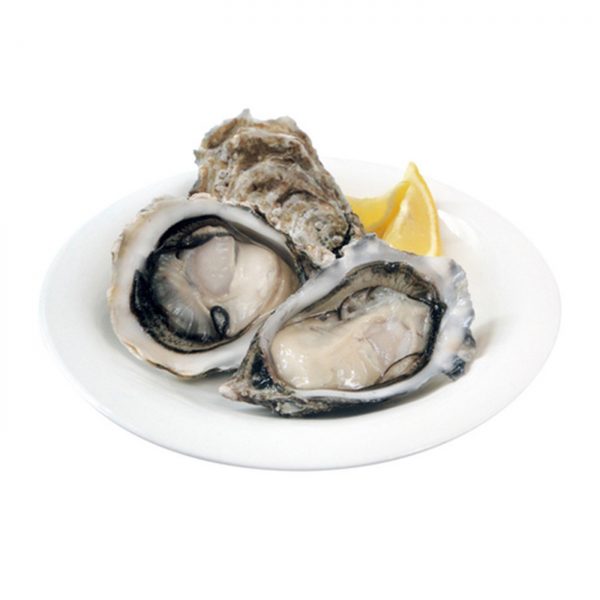 Their ‘specials’ oysters are fleshier, plumper, richer in flavour, beautifully balanced with the taste of the sea. Such is the quality and reputation of the Gillardeau oyster, for decades now they have been in greater demand and fetched significantly higher prices in the market, even more than other producers from the same region.
Their ‘specials’ oysters are fleshier, plumper, richer in flavour, beautifully balanced with the taste of the sea. Such is the quality and reputation of the Gillardeau oyster, for decades now they have been in greater demand and fetched significantly higher prices in the market, even more than other producers from the same region.
A little over a decade ago, the Guillardeau family began to notice inferior oysters -some even coming from a different hemisphere- being sold off as their own family brand. Far from flattered, they quickly realized that this was not only damaging for their own business but also to the businesses of their clients. The family decided that drastic action was required to immediately and permanently eliminate the problem.
Veronique Gillardeau is quoted in Singapore’s ‘Peak’ magazine as stating “We put a lot of effort into controlling the level of bacteria in our oysters, and we can’t stand for copies that might result in health problems”.
The company decided to spend close to eight million dollars on laser technology that cuts a small Guillardeau logo, (the letter G in a circle) into the shell of every single oyster they sell. The laser-cut is unique, does not affect the taste and the equipment can laser 4 oysters every second. This meant that whilst it was expensive, it was viable and so they decided to go ahead.
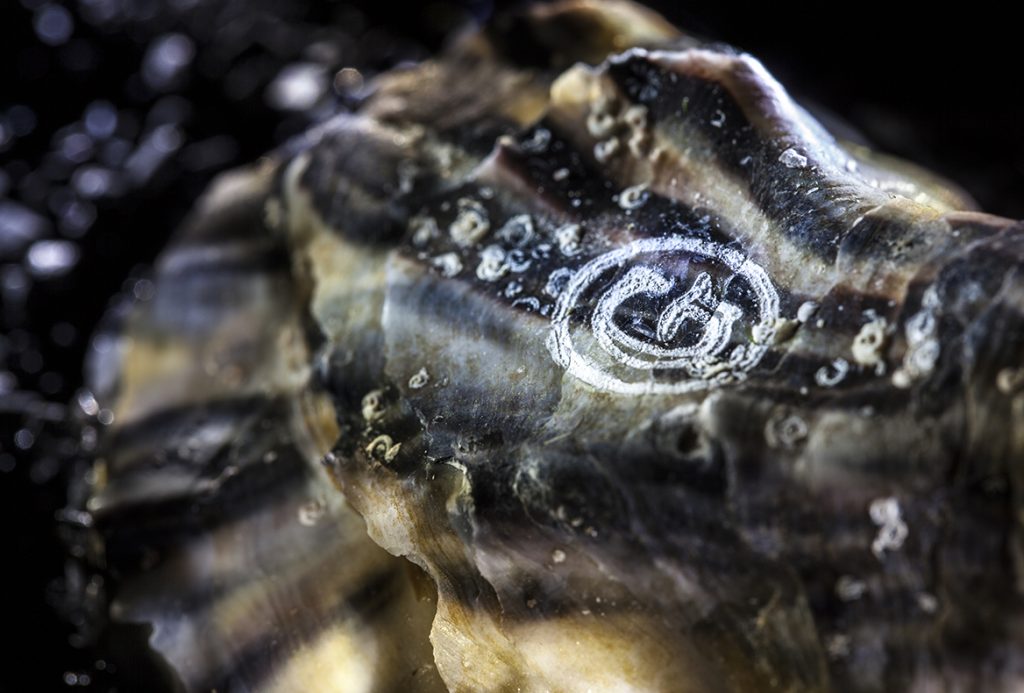 The first laser cut Guillardeau Oysters hit the market in 2014, given the media mileage and consumer equity the brand has gained, the investment seems to have been well worth it. The family’s reputation for oyster farming was now not only protected, but it was also well and truly enhanced.
The first laser cut Guillardeau Oysters hit the market in 2014, given the media mileage and consumer equity the brand has gained, the investment seems to have been well worth it. The family’s reputation for oyster farming was now not only protected, but it was also well and truly enhanced.
Guillardeau oysters are air-flown to Cambodia and available at Topaz restaurant, they simply have to be tried, whether a lover of oysters or not, their quality and exceptional merroir simply must be experienced, preferably with a Cru Chablis of an equally inimitable standing.
If you are eating your oysters raw, (the preferred option) then they must be both alive and well chilled. A few drops of citrus acidity can enhance and lift the flavours of your oysters, and this is all you really need, just don’t overdo it. Chew your oyster slightly in order to fully appreciate its flavour, its wonderful minerality, and its delightful texture. When considering a wine pairing, it is worth noting, with all that sea salt/mineral wash character in your oyster, it is going to need a wine with greater acidity to get over the top of it; Champagne, Chablis, Sancerre, Pouilly fume or a fine Muscadet Sur Lie, all offer wonderful possibilities. Enjoy!

